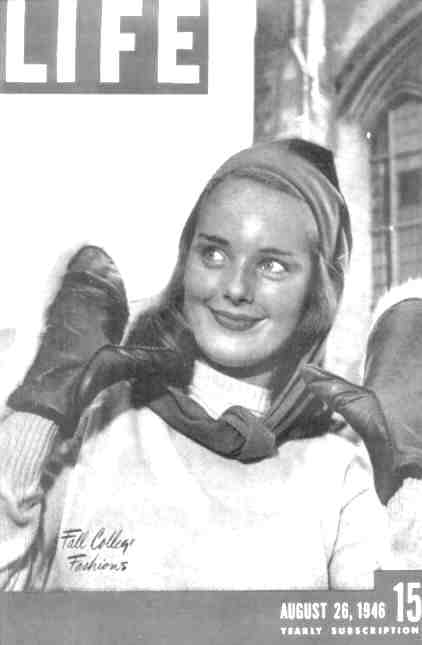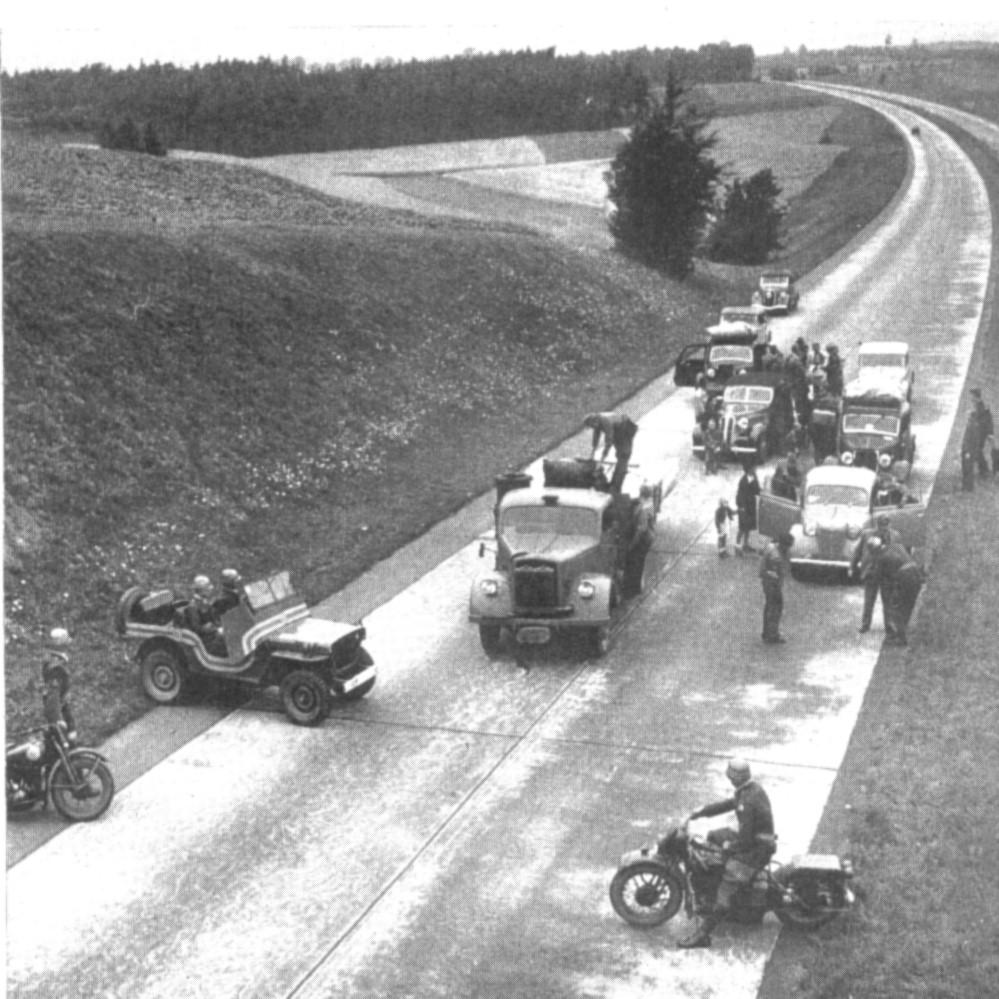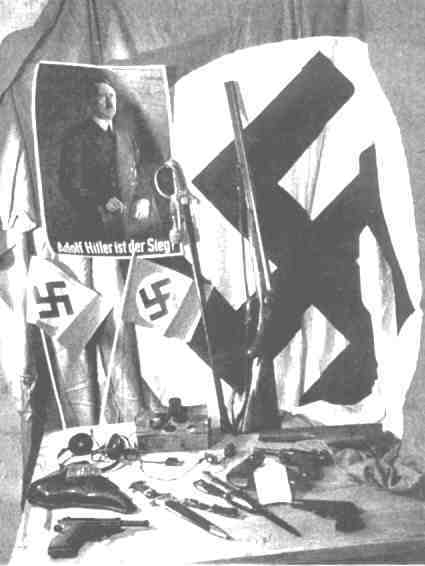Was
America
reading
about the
U. S. Constabulary Force
in
1946?
Click on one of the above links to see these special photos or scroll
down and see all..
The source of information of which I acquired, came from a copy
of Life Magazine donated by Ed Bowley.
Important Notice
If there are any pictures, references or information contained
in this web site that is copy righted or
the sole property of a company or individual, and you do
not wish to have it on this home page, contact the web editor and this
item will be removed immediately.
Web Editor
irmoore@eatel.net
The Cover of Life Magazine

Below you will see a photo of the Headquarters of Constabulary which
was located in Bamberg, Germany. The MP is standing at attention
as General Harmon's proceed with his inspection. Harmon was with
the 1st and the 2nd Armored Divisions when he fought in Africa, Italy and
in France. Gen. Harmon wore the patch of the 2nd Division.


General Harmon
Below is a photo of what happens at a check point. The Constabulary
Troopers are blocking the autobhn stopping all traffic, including the U.S.
Army vehicles. They are checking for identification papers and illegal
possessions on everyone.

Below in the photo a Former Nazi Peasant Leader. He is being
questioned by the U.S. Constabulary Trooper. The man's home is searched.
These raids are called "Swoops" which are painstaking but polite.
The troopers are required to knock on the doors before entering into
their home.

Below you will find the items found by the troopers upon completing
the village raid.
It is not legal for the Germans to have any of these items in their
possession.

It was around Aug. 19th, 1946 that the Military Governor of the U.S.
Zone of Occupation in Germany, General Joseph McNarney emphasized in his
report the policing job the U.S. Army faces.
1. Food thefts have risen.
2. Organized gangs have begun to appear.
The General added, arrests and convictions have increased and
jails were filled to overflowing.
He made the statement that the size of the job pressed the
Army's seven months earlier to form the new U.S. Constabulary to police
Germany. The increase in number of criminals apprehended shows how
good a job the new force was doing.
The Constabulary was led by Major General Ernest N. Harmon.
33,000 specially trained troopers dressed with their own distinctive
badge [a yellow silk scarf] and wore full uniform all the time.
Every community in the zone was patrolled at least once every three
days. To keep the Germans from knowing when the next patrol
would be, the patrols were staggered. The troopers checked the behavior
of other U.S. troops, kept DP in hand, hunted illegal travelers, smugglers
and black marketeers. The Germans suspected of harboring illegal
arms or furthering Nazi ideas were tracked down. The Constabulary
troops were the first to be sent to crush resistance at any uprising.
In the Army's occupation method, the Constabulary represented a vigorous
step forward. The Army's small Counter-Intelligence Corps hunted
spies and top war criminals. The still smaller Criminal Investigation
Division tracked down other criminals. Both of these specialized units
used the Constabulary for search and arrest.
In the Army of Occupation, there are about 300,000 men to perform
a multitude of governing and guarding jobs.
The U.S. Constabulary Force was a well disciplined spearhead, whose
great mobility and exceptional esprit de corps enabled it to reach
out daily all over the U.S. occupied Germany and made a courteous show
to force that the Germans learned to fear and respect.



